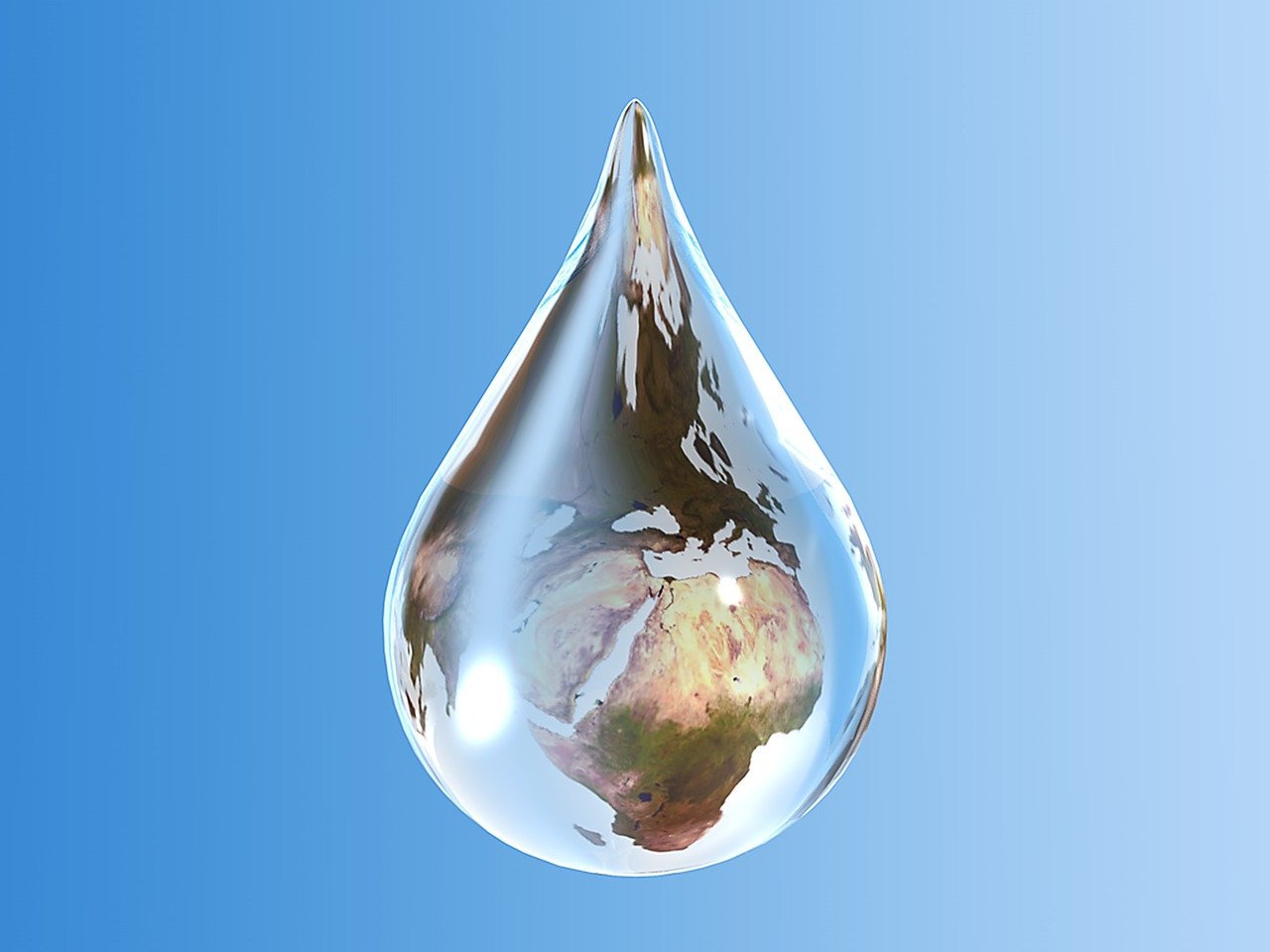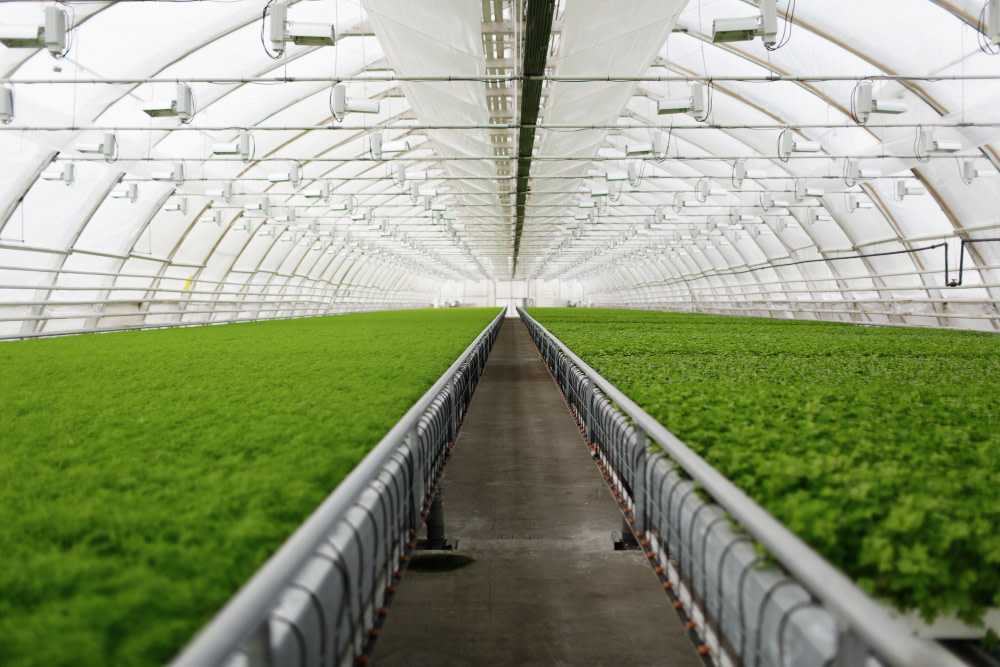Is Water Sustainable? Understanding the Reality and Solutions for Future Generations

The necessity of protecting water for future generations has become increasingly urgent, given the effects of global population growth, urbanization and climate change. To ensure that our most valuable resource remains sustainable in the long run, we need to address effective solutions around efficient water management strategies. In this effort towards a more secure aqua-based infrastructure worldwide.
Let’s take a look at what being ‘water sustainable’ entails as well as examine the innovative measures put forth by individuals or communities striving towards making it possible!
Key Takeaways
Water sustainability is essential for meeting current needs without compromising future generations.
Climate change has a direct impact on water scarcity but strategies like renewable energy and agricultural water use can reduce these effects.
Startups are innovating to make a positive impact on global water security through sustainable management practices, pollution reduction, and conservation efforts.
Exploring the Concept of Water Sustainability
To ensure sustainable supply of water to all, and protect the needs of future generations in particular, it is essential that we take proper steps towards holistic management. To do this amidst rising global freshwater consumption and climate change-induced water stress requires adequate quantity as well as quality for various uses.
Water sustainability means catering to current requirements without compromising on what will be needed by those coming. Something achieved through prudent use of our resources, with utmost attention paid to keeping the right levels both quantitatively and qualitatively. By doing so, ecosystems are also protected along with providing a secure source for everyone’s benefit now and going forward.
Understanding Water Resources Management
The process of managing water resources to meet the demands and preserve future supplies is essential for creating a sustainable solution global water demand. Sustainable water management strives to tackle climate change, pollution and overexploitation that may come with industrial production practices or high energy requirements when it comes from desalination.
Achieving sustainability in our water system requires us to explore technologies such as renewable energies like solar power, increase accessibility especially in developing countries, introduce rain-fed agriculture systems complete with optimal planning techniques along with urban resilience plans which embrace green infrastructure projects. These strategies have been successful evidenced by organizations like The Tarrant Regional Water District outside Dallas, Greek islands using their access to this new innovation and agricultural optimization methods contributing to lasting solutions for clean surface waters around the world where needed most.
The Role of Climate Change in Water Sustainability
Due to climate change, water sustainability has become a far more difficult endeavor as it contributes to an ongoing global environmental crisis. This issue is compounded by extreme weather events, increasing amounts of water scarcity, flooding and pollution that can even lead to destruction of ecosystems.
In order to better respond to these challenging circumstances and boost resilience for the management of our waters against natural disasters brought about by climate change, strategies such as improved reuse technologies with renewable energy or optimizing agricultural practices are recommended, like optimal agricultural production systems combined with desalination processes in areas affected particularly harshly by drought.
The Current State of Global Water Resources
The strain on global water resources is intensifying. By 2025, two-thirds of the world population could be living in areas where freshwater supplies are dwindling faster than they can regenerate. To ensure a sustainable supply of water and reduce adverse social and ecological impacts, large scale dam projects must carefully factor these conditions into their planning.
The effects that climate change, escalating human numbers, and increasing consumption rates have on access to clean drinking water or sanitation has resulted in deplorable circumstances for many people residing in developing countries due to extreme pressure around this vital resource.
Assessing Water Stress and Scarcity
When the demand for water outstrips what is available in a certain area, it can lead to heightened levels of ‘water stress’. This notion of water demand can be evaluated using methods such as the Falkenmark Water Stress Indicator, which compares renewable sources with population size. The primary causes of this global dilemma include rising populations and urban growth, environmental changes like climate change, impurities that contaminate bodies of water or streams, mismanagement on how best to use resources at hand, and over-utilisation of groundwater aquifers.
Conversely, when supply falls short due to scarcity then severe problems start arising: an inability to maintain proper water and sanitation, may cause outbreak diseases like cholera and typhoid fever while shortages concerning drinking H2O also affect air quality alongside hygiene standards plus nutrition not least food. To understand more, check out this link at the Global Water Forum.
Major Ecosystems Approaching Thresholds
Climate change and unsustainable water use are having devastating effects on ecosystems, both aquatic and terrestrial. With its reduction in available resources for species, worsening of quality due to pollution, as well as floods caused by extreme weather patterns brought about by climate change. Biodiversity is under threat like never before, which is damaging human welfare.
It’s not just the lack of availability that affects us either: polluted waters degrade essential life-sustaining traits such as oxygen levels reducing populations size causing even more widespread damage, from ecosystem destruction to economic chaos inflicted upon those dependent on freshwater fishing or farming industries.
Strategies for Securing a Sustainable Water Future
We must prioritize the use of green infrastructure, renewable energy sources and water reuse technologies in order to secure sustainable water for generations ahead. This way we can both reduce pressure on freshwater resources and make sure that sufficient clean drinking supplies are available now, as well as into the future.
Advancements in Water Reuse Technologies
Water reuse has been proven to be an effective method in conserving water resources and promoting environmental sustainability. Through the utilization of advanced technologies, such as real-time monitoring of water quality and analytics, membrane filtration for potable/nonpotable use, modernized treatments for high salinity waters, all these permits adequate amounts of supplies with appropriate levels suitable for drinking purposes or industrial needs. It facilitates access to proper irrigation methods, which can also help conserve nature while satisfying human requirements simultaneously. Water reuse technology is therefore not only important when addressing challenges related to scarcity, but also has a major role in being eco-friendly too.
Integrating Renewable Energy in Water Management
Renewable energy has the potential to bring sustainability into water supply systems by reducing their carbon footprint. Solar photovoltaics and other technologies can make irrigation practices more reliable, while also lessening risks associated with climate change as well as decreasing our dependence on fossil fuels. One example of renewable energy being successfully incorporated in water management is hydroelectric power generation. It not only helps manage resources, but creates a reliable source of clean power too. Alternative sources for obtaining freshwater, such as recycling, are needed to ensure long term sustainable use of water supplies throughout all regions globally impacted by this issue due to climate change-related challenges such as hydrological drought or floods caused by sea level rising resulting from global warming.
Bridging the Gap: From Present Practices to Future Sustainable Development Framework
In order to move from current practices towards securing sustainable water development for the future, it is essential that we adopt new approaches in agricultural water use and boost access to this resource in developing nations. Adequate policy measures need to be taken as well. By engaging with these shifts, a secure water-related situation which preserves both people’s livelihoods and our planet can be achieved eventually.
Innovations in Agricultural Water Use
Agricultural advances like precision irrigation and drought-proof crops have the potential to substantially reduce water usage while increasing its effectiveness. By using a targeted approach, farmers can employ their resources more carefully, which reduces wastage but also increases crop yields. Similarly, cultivating drought resistant plants lowers requirements for extra watering thereby contributing towards sustainable water management and conservation of natural sources of water. Growing varieties suited to local climate conditions helps maximize sustainability in terms of supply through proper management, another way these improvements aid with preserving our precious reserves for future generations as well.

Improving Water Access in Developing Countries
Enhancing water access in underdeveloped countries is essential for the satisfaction of basic human needs and economic development. Investing money into infrastructure can be beneficial to reduce non-revenue waters, finance such projects while improving security and management as well. This results in better health status and job opportunity generation.
Community members should take an active role when it comes to maintenance, operation, and control over their own water resources - something that promotes sustainability along with improved efficiency regarding equitable distribution. This approach also takes advantage of regional knowledge base while cultivating social solidarity, which guarantees long-term success within these initiatives towards adequate levels of hydration.
Case Studies of Successful Water Sustainability Initiatives
Large-scale dam projects that effectively balance environmental and socioeconomic concerns, coupled with resilient urban initiatives focused on green infrastructure, exemplify successful sustainable development efforts in order to achieve a long-term water sustainability. These exemplary strategies are useful for policymakers and communities alike as inspiring examples of how innovative solutions can deliver secure access to safe drinking water for all.
Urban Resilience and Green Infrastructure
In order to create a city that is resilient in the face of climate change and reduce pressure on water resources, urban areas are employing green infrastructure projects such as stormwater management and green roofs. By managing rainwater efficiently, these solutions help conserve freshwater reserves while also improving water quality and providing essential ecosystem services. Permeable pavements can be used to control flood risks, which increases resilience against climate fluctuations.

Overall, by integrating various elements of sustainable water into their planning process, cities can promote better management practices for their available resources thereby making them more efficient with regards to waste reduction too.Green streets/alleys, parking lots equipped with trees or greenery, roof tops covered in vegetation - all serve as examples capable of promoting sustainability when it comes down to the treatment / handling & utilization of both potable drinking supplies but also nonpotables like runoff originating from neighboring businesses industries etc.
Interested to study this subject? Check out this course: Sustainable Urban Water Systems
Large Scale Dam Projects and Their Impact
Large-scale dam projects can bring potential advantages, such as the possibility of generating a sustainable water supply, renewable energy and improved food production through irrigation. They also provide opportunities to develop fisheries and advance modern methods for storing water that benefit society. It is vital to bear in mind possible negative environmental effects on wildlife habitats or fish migration. Their impact on flow rate & quality could be unfavourable too. There might be dire social consequences which hinder further Human development, thus comprehensive consideration must exist when assessing these initiatives so they truly contribute towards sustainable water management schemes. To get the most out of large scale dams while minimizing drawbacks requires equally evaluating all ecological aspects alongside any socio economic considerations – with an emphasis on benefiting long term sustainability regarding both our natural resources & ongoing human progress.
Navigating the Ecological Perspective
From an ecological standpoint, water sustainability encompasses the conservation of essential water bodies to make sure that human activities and other natural resources, are kept in balance. To achieve this goal, we must look at sustainable water management with a multidisciplinary approach as well as consider both short-term objectives and long-term aims for future generations. Taking into account these various components will ensure our current actions do not threaten the environment or its inhabitants down the line.
Preserving Vital Water Bodies
Preserving key water systems such as wetlands and rivers is essential in order to conserve ecosystem services, wildlife biodiversity, and maintain clean water for future generations. We must be mindful of protecting these bodies of waters in order to ensure a reliable source of safe drinking water, and protect ancient cultures from being wiped out by the modern world. Conserve various species’ habitats which are often centered around rivers or wetlands. Ultimately striving toward sustaining quality water sources that will last through many generations.
To assure sustenance of our invaluable watersheds, we need to take action by properly disposing of waste materials. Practice ‘source’ prevention strategies (eagerly researching possible threats); investing energy into conservational practices like rain harvesting tanks & environmentally sound recreational activities - such as kayaking - when partaking on journeys down said waterways. All solutions shall serve one purpose: preserving crucial reserves while promoting necessary environmental sustainability efforts.
The Balance Between Human Activity and Natural Resources
Sustainable development is only possible through the balance between human activity and natural resources. To achieve this, best practices in sustainable water management need to be implemented along with reducing pollution caused by urbanization and industrialization as well global environmental degradation such as preventing damage from farming operations, mining activities, or the burning of fossil fuels. Conserving our precious water reserves should also be promoted for a more promising future concerning these necessary resources.
Upholding an equilibrium between manmade endeavors while preserving nature’s life support systems requires us to make use of such methods that advocate responsible usage instead of wasting away what little we have left without any regard for tomorrow’s effects on them. This includes fostering sustainability when it comes to managing waters sustainably for their integral part in sustaining human habitats over time.
Adhering to contemporary measures regarding proper treatment and conservation of reclaimed water can provide help secure vital hydrological sources which are essential if humankind wishes continue thriving within its environment. At least balance out both worlds efficiently so neither one causes great harm upon the other due its own negligence or ignorance - where not only long-term consequences bear fruit but short term ones too depending on how developments take place throughout lands now then later onwards into generations ahead.
Startups trying to make a difference in this regard
Startups are bringing in innovative solutions to address the challenges surrounding water sustainability. Through forward-thinking technology, conservation efforts and increased knowledge about sustainable management of our resources.
These startups have become instrumental in achieving a better future where efficient use of clean water is guaranteed. Several successful organizations spearheading this effort include Glanris, BlueTap, Uravu Labs, Gybe Remote Waters, Lishtot and Water Warriors Inc., and Genesis Systems – which offer various forms sustainable water resources management such as digital platforms that monitor levels & usage patterns. Smart irrigation techniques, sensors that track aqua reserves plus portable desalination gadgets etc. By leveraging innovation while creating partnerships, they not only facilitate progress towards meaningful advances, but also act like role models who can propel others to take more responsibility so global sources remain safeguarded.
Final Word
Water sustainability is a critical issue, unfolding global ecological crisis requiring an all-encompassing approach to tackle water shortages, pollution and the effects of climate change. To create a secure and sustainable future with regards to this resource, we must use inventive strategies along with cutting edge technology while safeguarding vital bodies of water.
Startups, as well as governments around the world, are taking steps towards tackling these challenges, which show that together we can make it possible for clean drinking water to be accessible in years ahead.
Find current published ESG scores and reports from a vast directory of global firms at our Company ESG Profiles.
Frequently Asked Questions
Is water a sustainable material?
In order for water to remain sustainable, it is essential that we manage the finite and irreplaceable resource properly. The proper management of this vital element has a direct effect on our well-being and climate adaptation. Thus, making it key to guaranteeing its sustainability.
Is saving water sustainable?
Preserving water is an absolute must for a sustainable lifestyle, with plenty of perks. Cutting down on your energy bills and wastewater treatments can lead to a reduction in environmental contamination as well as conservation of the Earth’s resources, all while saving you money!
Is water well sustainable?
Sustainability and environmental protection are two reasons to consider well water as a source of clean drinking water. This renewable option does not need any chemical treatments, making it an excellent eco-friendly choice.
How can water be sustainable?
Harvesting rainwater is an effective method to promote sustainable water usage. It not only guards us from overdrawing surface water and groundwater but also offers clean drinking-quality liquid for our daily needs.
What is the difference between water stress and water scarcity?
When the need for clean water surpasses what is available, it’s called ‘water stress’; this occurs when there isn’t enough H2O to meet people’s demands.

